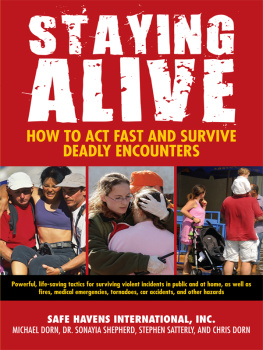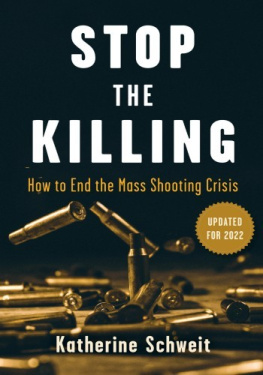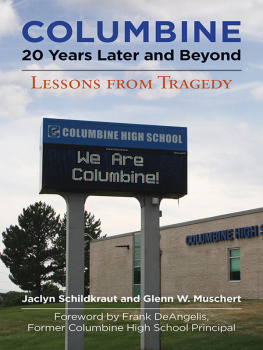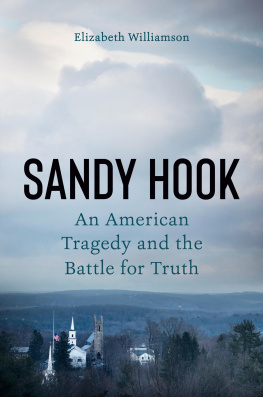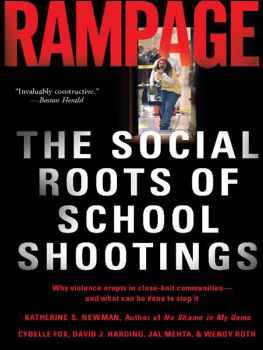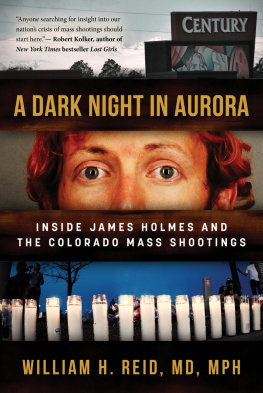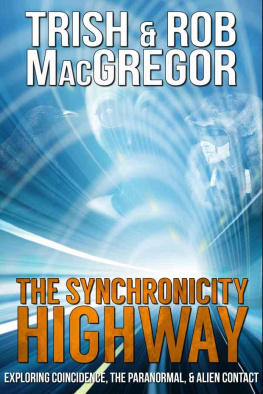
Additional Praise for Staying Alive
There is no way any of us can be 100 percent secure. However, by being properly armed with the facts and adapting even just a few of the preventive measures suggested in Staying Alive , we can get out of denial and fear and into healthy, appropriate action. If you want to move beyond the shock all of us experience when we hear about tragedies like Newtown, Connecticut, Aurora, Colorado, and Virginia Tech, read this book.
Robin Hattersley Gray, Executive Editor, Campus Safety Magazine
I think this is an important book, easily as important as Gavin de Beckers Gift of Fear .
Kenneth R. Murray, Author, Training at the Speed of Life
Additional Praise for the Authors
Innocent TargetsWhen Terrorism Comes to School brings clarity and reason to a topic few people see clearlyand most people dont want to consider. Michael and Chris Dorn have done the nation an important service.
Gavin de Becker, Captain (Ret.), LAPD, and Best-selling Author, The Gift of Fear
As one of our staff put it, learning school safety from Michael Dorn is like learning literature from William Shakespeare.
David C. Burleson, Superintendent, Avery County, North Carolina Schools
Michael Dorn and Sony Shepherd did a great job working to make Helena schools safer. Their work effected lasting positive change here.
Joe Furshong, Central Office Administrator, Helena, Montana, Public Schools
I personally gleaned a lot of knowledge from working with you [Michael Dorn]. I truly feel like I received a Bachelors degree in School Safety and Security after spending three very full days with you.
Tyler Triblehorn, Certified Educational Facilities Manager, Warren Township, New Jersey, Public School System

Dedication
This book is dedicated to all of those who survived the encounters described in these chapters as well as those who were not so fortunate. Staying Alive was written so that their losses would not be in vain.
Disclaimer
The information presented in this book is designed to provide general background for the reduction of danger on an interpersonal level and group settings. Readers should be aware that to use the skills and concepts in this book, they should also seek out information from other sources and in some cases expert advice, including legal counsel, public safety agencies, risk management, emergency management personnel, supervisors, co-workers, family members, etc., as applicable to the situation at hand.
The strategies discussed in this book are for use in the context of a holistic approach including the appropriate training, equipment, preparation, and in some cases licensing or certification required by the implementation of certain measures, especially those that may have legal or life-safety implications. With this in mind, this book should be treated as an informational guide and a supplement to the existing body of knowledge on the topic of survival as well as the auxiliary fields of personal safety and organizational preparedness.
To the best of our knowledge, this book is based on current research, numerous interviews, and the expertise of our review team and colleagues, and the authors have made a reasonable effort to verify the authenticity and currency of the information provided in this book. At the same time, this book discusses many current events with ongoing developments, investigations, and legal proceedings. Finally, methods of implementing procedures, programs, and strategies outlined in this book are obviously beyond the control of the authors. Therefore, the authors, editors, reviewers, publisher, and Safe Havens International Inc. assume no liability for the application of any concepts described in this book or any accident, injury, loss, or damage arising from the use of this information.
Copyright 2014 by Safe Havens International
All rights reserved.
No part of this publication may be reproduced or distributed in any form or by any means without the written permission of the copyright owner.
All inquiries should be addressed to:
Barrons Educational Series, Inc.
250 Wireless Boulevard
Hauppauge, New York 11788
www.barronseduc.com
eISBN: 978-1-4380-9272-0
Contents
This book is the result of more than a year of focused writing by a five-person team with the assistance of many others. Before that year came decades of learning through the support of our friends, loved ones, clients, and colleagues. As with any book, we could not have written this alone. Fortunately, we have a great group of friends and colleagues who have helped this book become something we can be proud of.
First, we would like to thank all of the colleagues and clients that we have learned from over the years. As important as our experience as practitioners is, we are grateful for the wealth of information we have gained from each school or organization that we have assisted through our nonprofit campus safety center.
We also are blessed to have Steve Harris of CSG Literary Partners as an agent. Clearly a man of great integrity, Steve is also a tireless advocate for the authors he represents, and we are fortunate to have him as a friend and colleague.
We would also like to thank the entire Barrons team for working with us on this project and believing in our idea since its inception.
Finally, we would like to express our deepest gratitude to our families and friends who have endured countless hours of revising, opinion asking, and general advice seeking during the creation of this book.
About the Stories Used in This Book
Many of the stories in this book are based on our personal experience, the experiences of our family members, and anecdotes about our friends and colleagues. In some cases, we have changed the names or details of specific stories to protect the identities of the people involved. In four instances, we have taken some literary license with the dialogue and thought processes of people involved with the incidents who are no longer living. The details of the Enoch Brown story in the introduction, the Goleta, California, story in are all based on real events, and, other than the dialogue, the details of each story match the facts available about each incident.
In September 2001, after recovering from the shock of the World Trade Center attack, virtually every American enterprise and adult began considering what steps should be taken to prevent an attack on their company, institution, or themselves personally. What had they not considered? What were the best practices and how could they be adapted locally? How would we know how well a solution would work before it was put to the ultimate test? These are fundamental questions that any risk manager would ask when assessing a potential risk of the highest severity.
My organization, Boys & Girls Clubs of America (BGCA), was no different, and we soon began receiving inquiries from many of our 1,000 local affiliate organizations, asking for examples of best practices for emergency procedures, particularly to address bomb threats and armed intruders, often referred to as active shooters. For our overall organization, no two facilities or settings are alike, and up until that time we had not considered a universal template to help all affiliates develop locally tailored plans to address a wide range of possible man-made and natural emergencies in each of the 4,000 sites they operate. Many of these sites are also shared with schools and other property owners.
Next page
